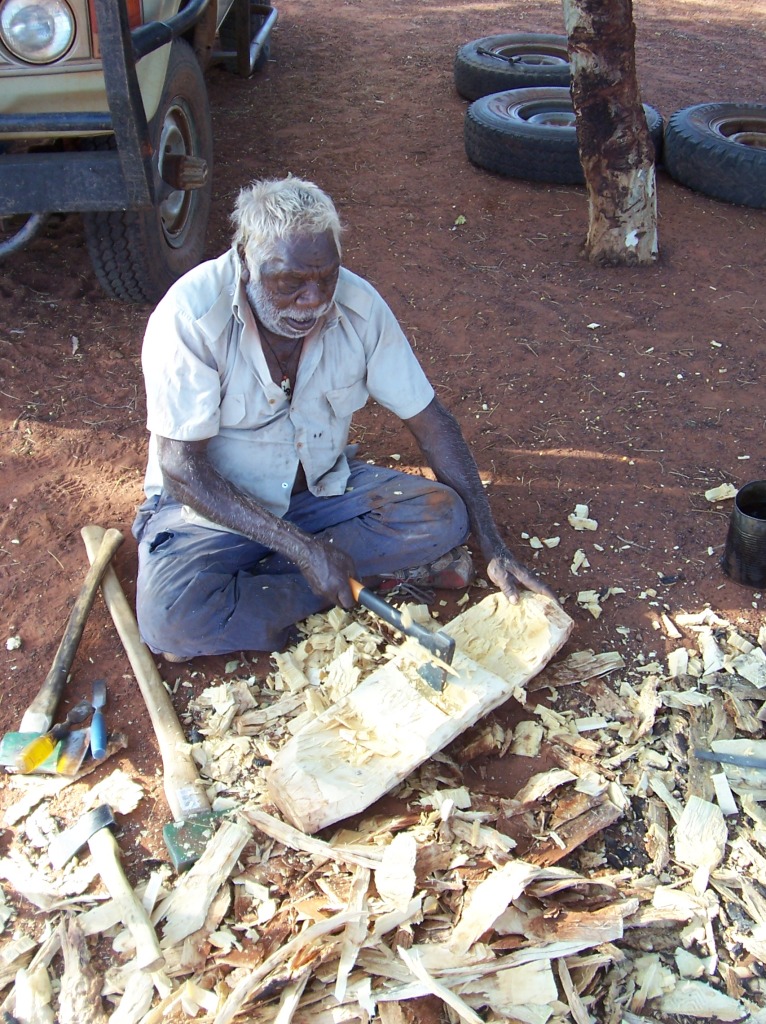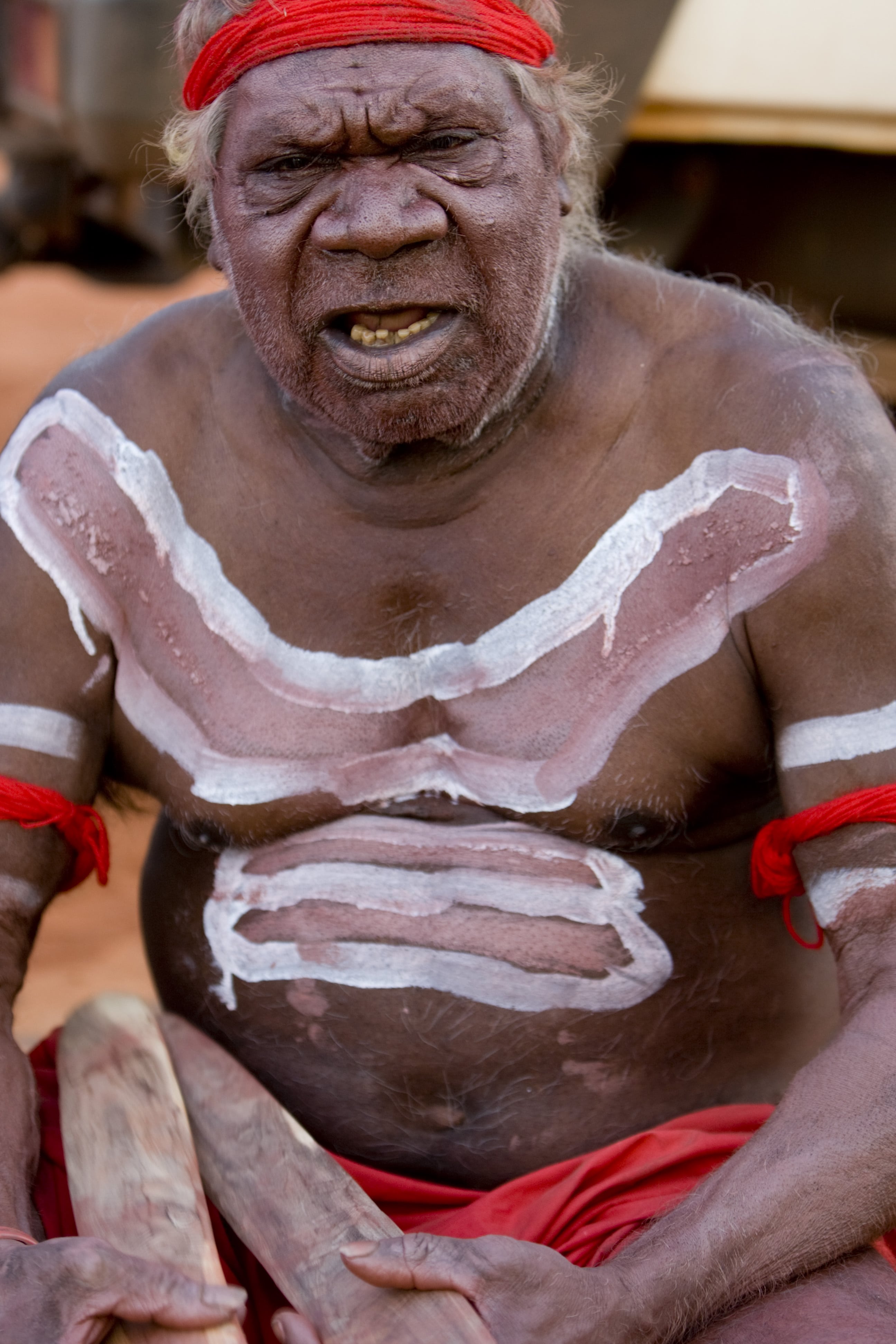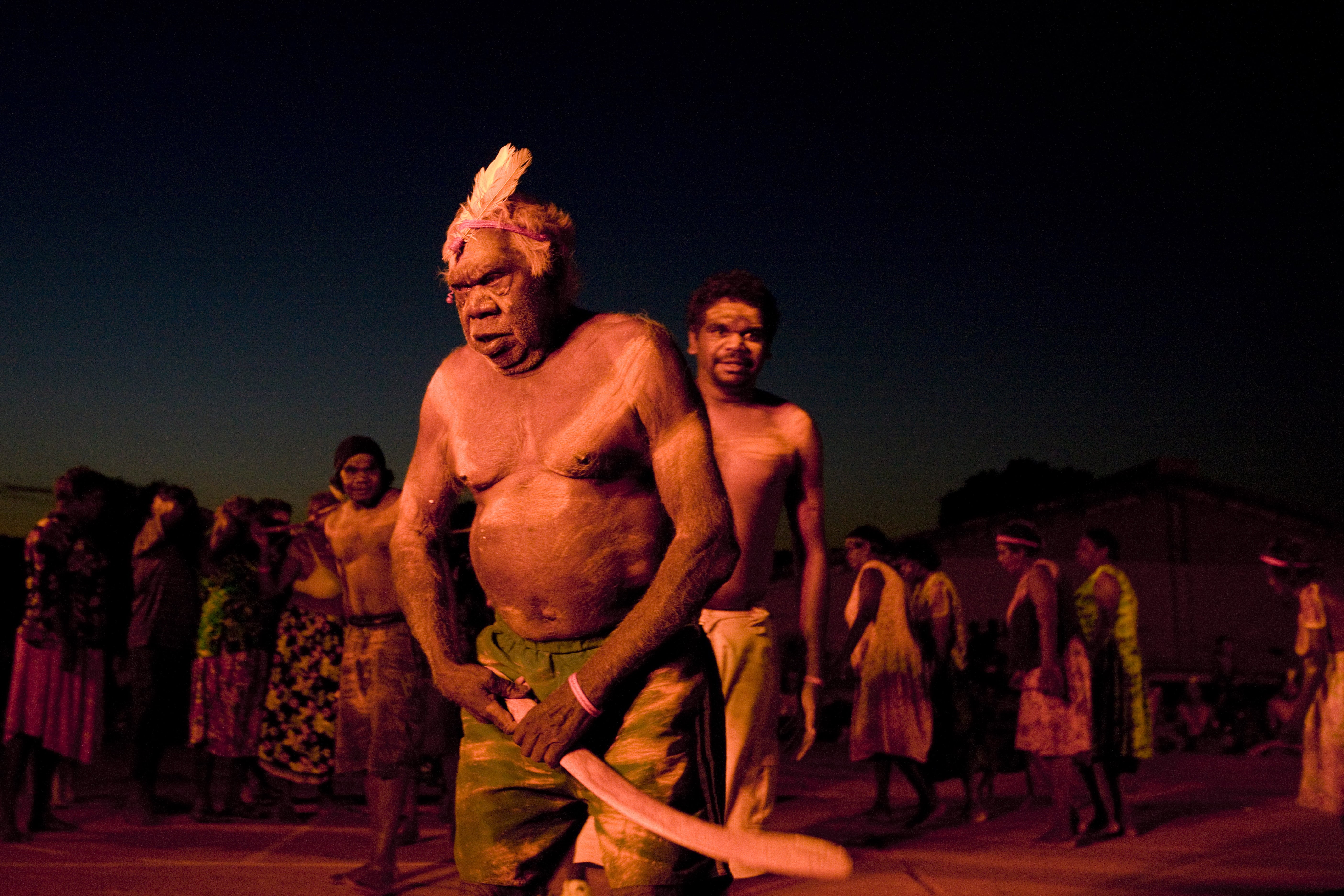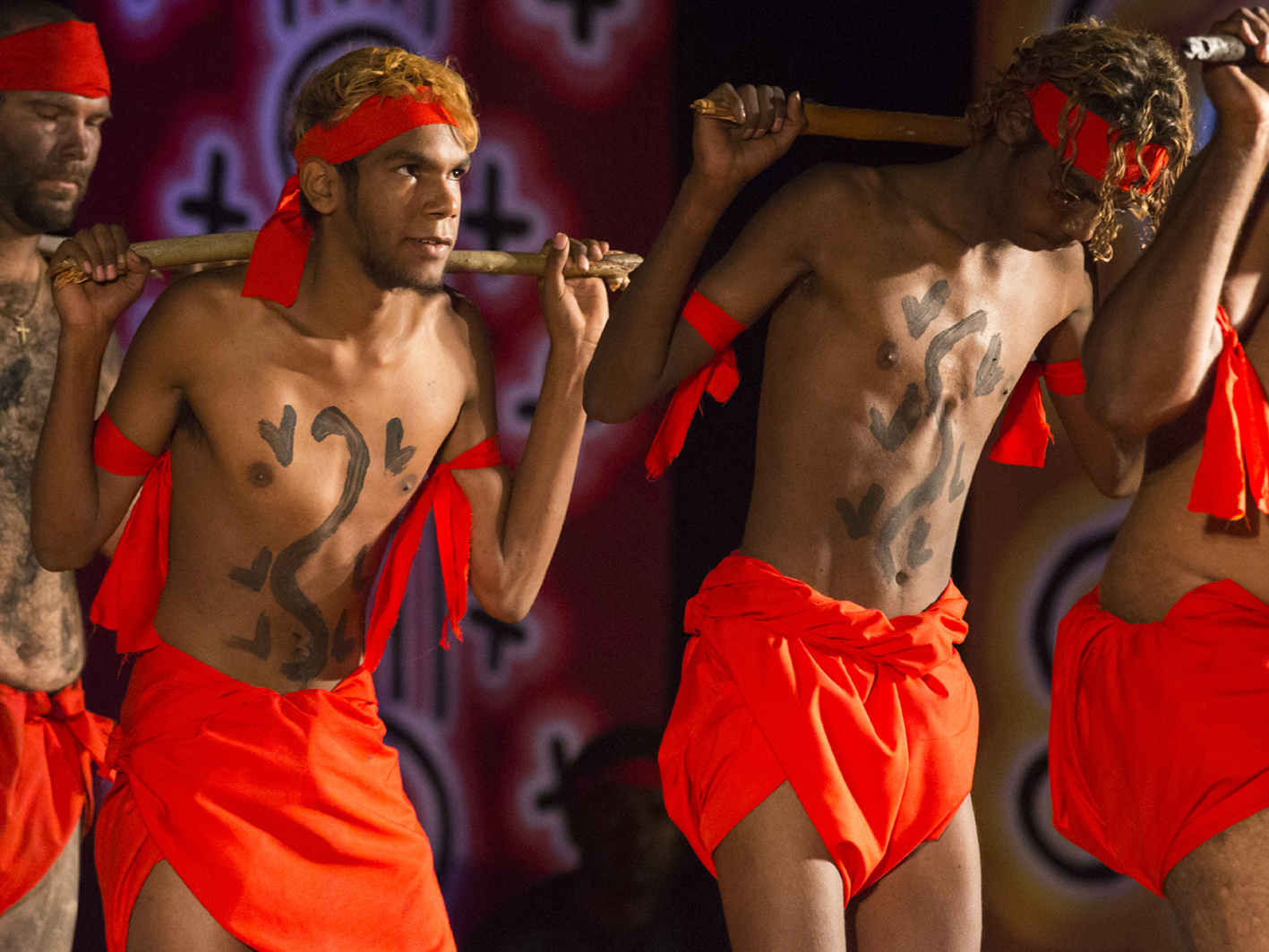Milpirri Banner - WAMPANA (Spectacled Hare Wallaby)
Dreaming Design
Wampana (Spectacled Hare Wallaby). The parallel lines are the Wampana tracks, the curved lines on either side of the painting are its tail. The central circles joined by straight lines represent the cleared ground for ceremony. The circles around the perimeter are places on country that Wampana dreaming visited.
Belonging to Skin Groups
Jupurrula, Jakamarra, Napurrurla and Nakamarra (Red Group)
Drawn By
Teddy Jupurrula Morrison (deceased 2017) was born at Miya Miya in the 1940s. Teddy Morrison Jupurrula was an iconic Warlpiri elder, an experienced bushman and master craftsman; Jupurrula could often be found making boomerangs and shields. He was committed to passing on his culture to youth, and supporting a good deal of academic research, land claims and cultural heritage research. He was instrumental in starting the Northern Tanami IPA and the Warlpiri rangers. He was an accomplished artist and dancer who travelled overseas to display his paintings and dance.
Latin
Lagorchestes Conspicillatus
Country and Biology
Wampana (Spectacled Hare Wallaby) - Photo / Information
Dreaming Story
“The Wampana wallabies were carrying on their heads Yarripiri Snake Dreaming. They were joined at Miya Miya by Wangkinpa, the seed thrower who went ‘wrong way’ with a Nangala, his mother-in-law! There was also Karlajirri, the Spinifex Seed dreaming, with two birds, Kurlukuku dove for the women and Ngalamurrurru pigeon for the men. All these came from Wingki, the waterhole that becomes salty after the big bush fire…. The giant Yarripiri snake continued its journey after the Wampana stopped, it travelled north right up the Darwin Sea, where it hid.”
Wampana story by Henry Jakamarra Cook 1998 in Barbara Glowczewski, (2001) Dream Trackers: Yapa Art and Knowledge of the Australian Desert. (Multi-Media Recordings of Lajamanu Area). Paris: UNESCO
Place
Wampana dreaming travels over many sites through Warlpiri country. The Wampana dreaming ancestors start from the important site Wirnparrku before travelling north through the Central Tanami Desert.
Ceremony
“At Miyamiya (Central Tanami Desert) the Wampana Wallabies held a Jardiwanpa, the fire ceremony for settling disputes that belongs to the Jupurrurla and Jakamarra and their sisters.”
(Jardiwanpa, as told by Warlpiri men and women in 1988 in Barbara Glowczewski, (2001) Dream Trackers: Yapa Art and Knowledge of the Australian Desert. (Multi-Media Recordings of Lajamanu Area). Paris: UNESCO.
Watch some of the Warlpiri Jardiwanpa (Fire) Ceremony which was held by the Wampana Wallabies - Video
Jardiwanpa Songs
“The Jardiwanpa ceremony celebrates the journey of Yarripiri, an ancestral inland taipan snake, on a journey northwards through Warlpiri country. A book published by Batchelor Institute Press is about the song series sung by Warlpiri women from Yuendumu in preparation for this important ceremony. Two senior Warlpiri women, Peggy Nampijinpa Brown and Coral Napangardi Gallagher, tell the stories associated with these songs so that younger generations of Warlpiri people can learn about this important part of their cultural heritage. The book includes the rhythmic structures, words and interpretations for each song, and further depict their significance with accompanying photographs of women in performance and associated images of animals, plants, artefacts and places
Jardiwanpa yawulyu | Warlpiri women’s songs from Yuendumu is a book published by Batchelor Institute - Information
Traditional Use Stories
Read about the Wampana (Spectacled Hare Wallaby) in the Warlpiri book called “Kuyu yumurru-kurlu: Meat Animals with Fur” by Ormay Nangala Gallagher (2014). Kuyu yumurru-kurlu. Yuendumu, N.T.: BRDU, Yuendumu School - Download PDF
Language Stories
Wampana, wita karnalu ngarrirni kuyu. Ngulaji ka nyinami - wakulyarripiyajuku. Ngulapiyayijala ka nyina. Palkaji. Kala witalku ka nyina wampanaju. Wakulyarrinya ka nyina wiriji. Wampanaju ka nyina wita. Marnangajala ka nyina manangkarrarla. Nyanungurlu wampanarlu, ngurraji kanyanu wita pangirni marnanga. Marnanga ka nyina kaninjarni. Yalikirraju(ku) karnalu pantirni. Kurlardarlu - karlingi karnalu luwarni.
Wampana is what we call a small animal, the Spectacled Hare Wallaby. It is just like the Banded Rock Wallaby. Its body is just like that of the Banded Rock Wallaby except that the Spectacled Hare Wallaby is smaller. The Banded Rock Wallaby is bigger. The Spectacled Hare Wallaby is small. It lives in the spinifex in the open plains country. This wallaby builds itself a little nest in the spinifex grass. It lives inside the grass nest. That is where we spear it or where we kill it with boomerangs.
Wampana ka milpa tiri-tiri nyina yungu jukurrparlu warnangku purraja milpa.
The Spectacled Hare Wallaby has red eyes because the Dreamtime snake burnt its eyes.
Kala Wampana-jukurrpa yangka kajilpa yapa paliyarla, Yulkaminyi-jukurrpa, ngula kajikalu ngarrirni marda wangku-ngawurrpayijala.
And if some person called Wampana-jukurrpa or Yulkaminyi-jukurrpa (Spectacled Hare Wallaby-dreaming) were to die then they would call that animal Wangku-ngawurrpa (grass nest-dweller) as well.
Dictionary Source: Laughren, M., K. L. Hale, and Warlpiri Lexicology Group, 2005 Warlpiri-English Encyclopaedic Dictionary. (Accessed Via Kirrkirr Interface to Electronic Files.) University of Queensland
Milpirri Dance
In the Milpirri performance, Wampana is danced by the men supported by women. There are two variations: Ngalia side - Wampana men are travelling north carrying a big snake before handing it over to the Warnyaka mob. Warnyaka side - Wampana men are travelling North carrying a big snake that they have received from the Ngalia mob - Video
Some families to learn more from
In the north of its journey the Wampana families are Morrison, Patterson and Rennie. For the southern section try the White and Walker families.





